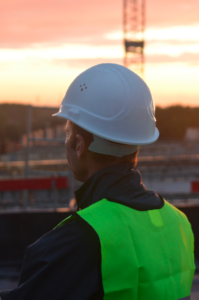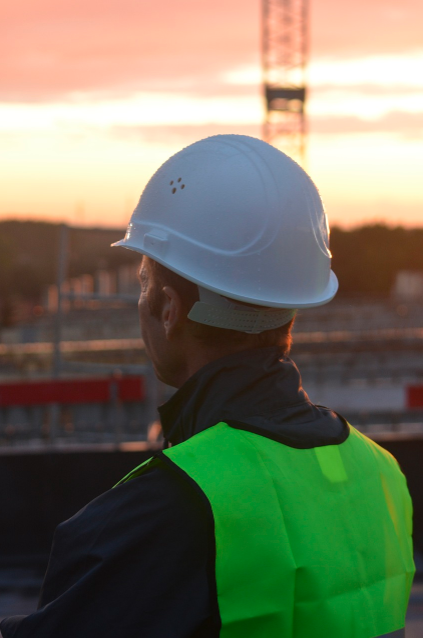Being a human being in a space that’s made for and occupied by moving vehicles is not a comfortable feeling. One way we protect our workers in situations like that is with famously neon safety vests. A safety vest can easily and frequently save a life.
Safety Vest Requirements
For high visibility clothing to be successful, they have to be appropriate for the traffic of an area. Safety experts compile high visibility clothing requirements to guarantee the wellbeing of people working hard-to-repair potholes, cracks in asphalt, and any other damage to driving surfaces.
Class 1
A class one safety vest requires just enough reflective material for someone working in an area with slow moving vehicles. Workers paving Las Vegas parking lots should be in class one safety vests.
Class one safety vest requirements are the least stringent and provide the lowest amount of protection. A vest with a minimum of 217 square inches of fluorescent material and one inch wide reflective strips is considered a class one safety vest.
Class 2
High visibility clothing that falls under class two is for work areas near vehicles moving under 25 miles per hour. Anyone working near a railway or school zone will be wearing a class two safety vest.
The DOT safety vest requirements state that this vest is a bit more extensive than class one, but it’s still not enough for highway work. Larger retroreflective bands and 755 square inches of conspicuously colored fabric are what take a high visibility item of clothing from class one to class two.
Class 3
To work in an area within 25 feet of vehicles moving above 25 miles per hour, workers are required to don class 3 safety vests. The safety vest requirements for class three are so extensive that some vests have sleeves added on to meet the requirements for reflective fabric amounts.
Workers paving Las Vegas highways are required to wear class three vests. To be considered class three, a safety vest must have 1240 square inches of fluorescent material and two-inch reflective bands.
Class E
Finally, there is a class of reflective gear that goes beyond vests. Its classification steps out of the bounds of numbers because it is meant to be added to class two or three safety vests. Class E consists of high visibility pants. When paired with class two or three safety vests, the class E pants give workers even more visibility and comfort of knowing they are more likely to be seen.
Let Us Don Our Safety Vests for Your Project
We would love to put on our high visibility clothing and complete your driveway or parking lot project. If you have a need, we will even break out the class three gear and give the highways a facelift! Contact J&J Asphalt for a free project estimate.

